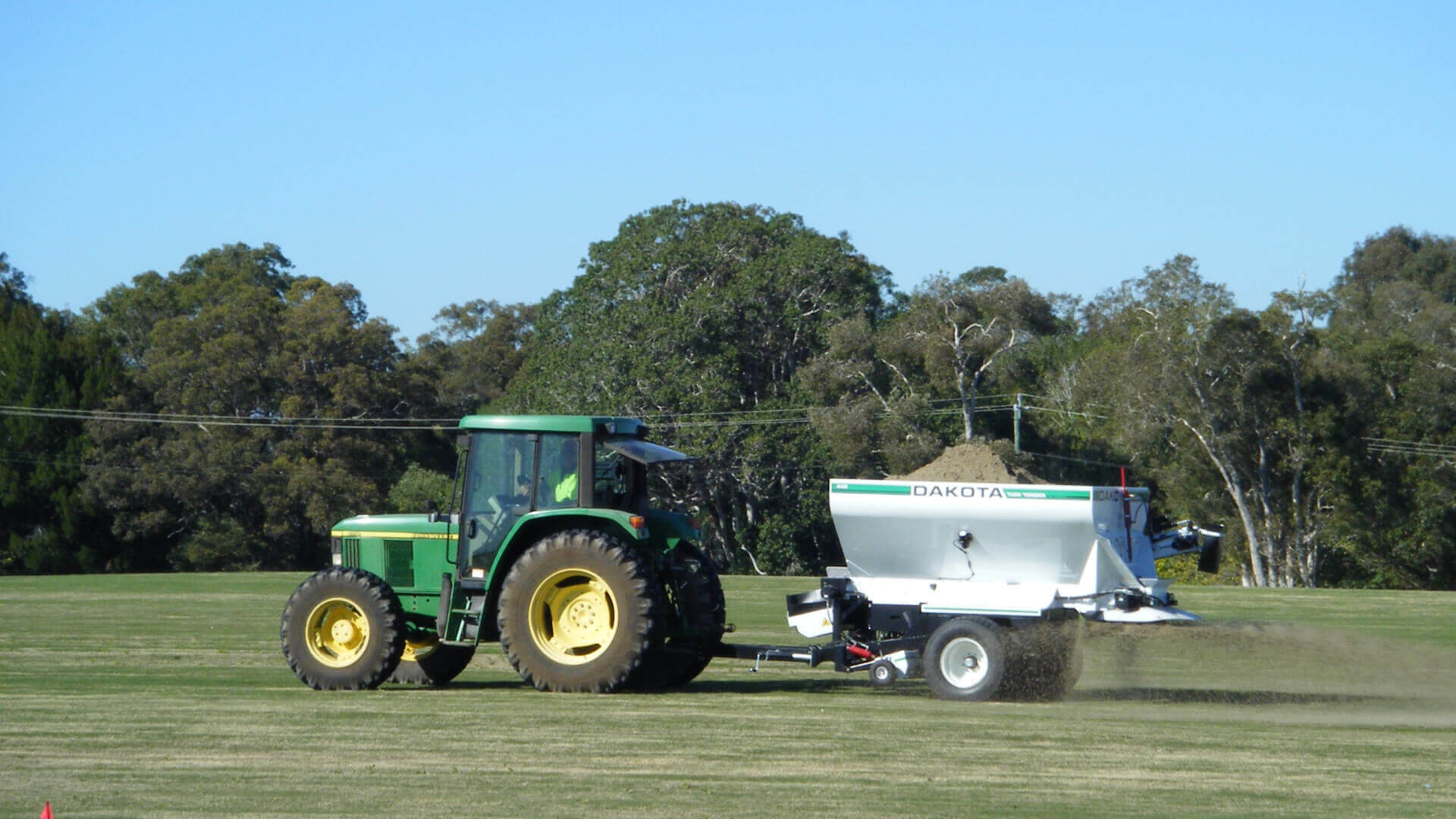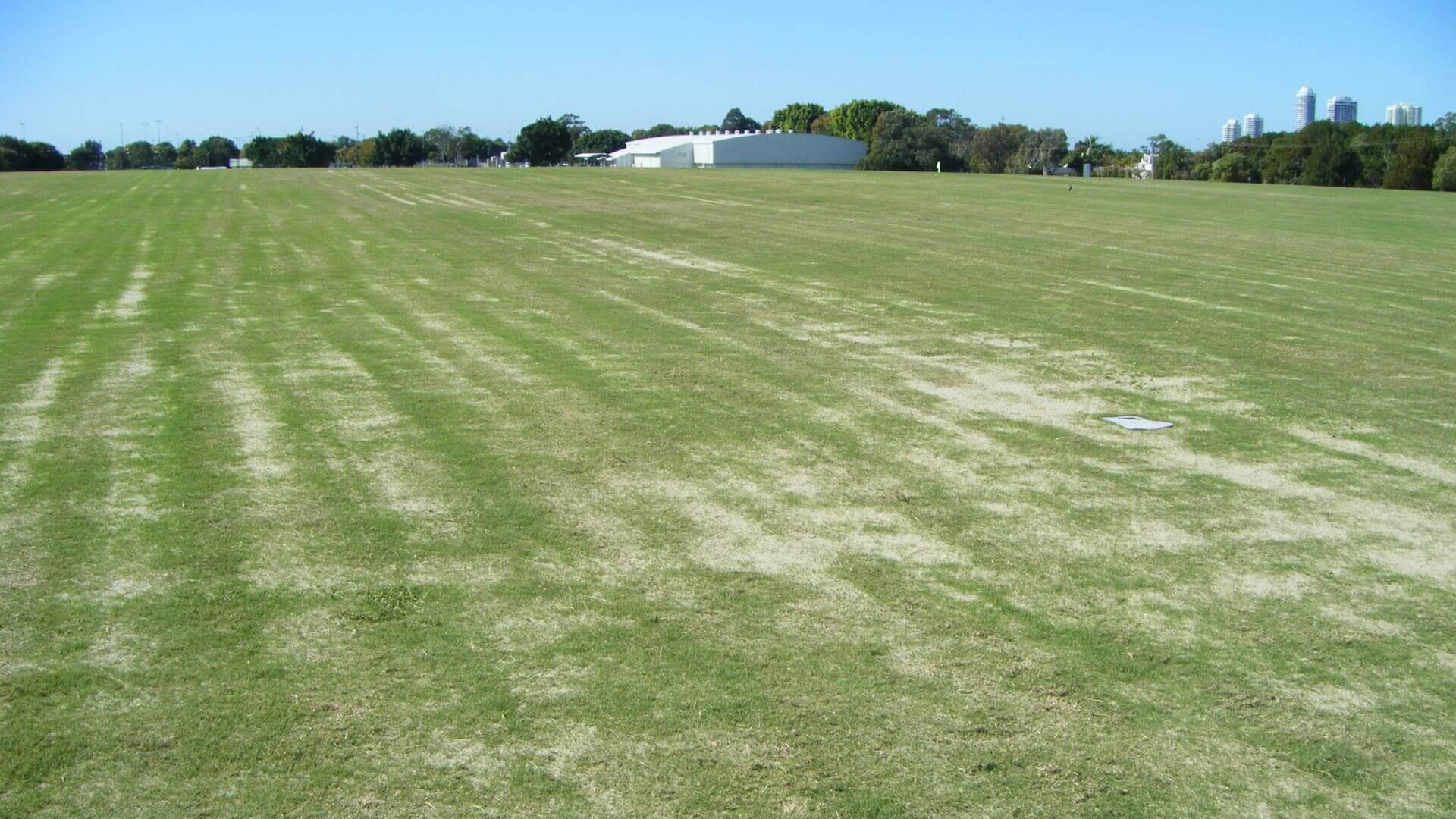Have you ever wondered why you can see sand on sports fields or golf courses? Sand is spread across the surface to assist in leveling out uneven surfaces. This application process is often referred to as top dressing. Top dressing can provide many benefits to sports fields and golf courses when used strategically as part of a holistic maintenance plan. Failing to implement a consistent top dressing schedule can have a negative influence on the fields or courses’ performance.
As the grass grows it produces organic material (roots, shoots and lateral stems) that can accumulate and act like a sponge holding excess water near the surface. When excessive amounts of organic matter accumulate, the health and playability of the grass are negatively impacted. You will be walking on soft, saturated grass that leaves footprints that can impact the surface smoothness, especially on putting greens. If this excessive amount of organic matter is not addressed, the sponge effect will worsen. The solution to reducing the chances of this occurring is by regularly top dressing with sand.
Top dressing with sand can fix heavy thatch build-up, cover tree roots, improve the level of the ground, improve drainage and soil structure.
Golf courses are built on sandy soils and specialised turf grass that thrives in sandy conditions. This means top dressing with sand won’t cause any issues. Because they receive regular maintenance (fertilizing and water), this helps to correct any deficiencies caused by adding sand.
Top dressing should be completed just before the growing season to avoid damaging or killing the grass. Usually, this is at the beginning of spring. While top dressing for nutrients can be completed at any time of the year.
Don’t top dress on an annual basis regardless of popular belief as this will accelerate thatch build-up. Also, avoid top dressing if rain is predicted as it makes the sand difficult to level and deal with in general. Wet-top dressing doesn’t spread smoothly as you can imagine and can be more of a detriment than aid in maintaining sports fields.
Many turf managers top dress before sports seasons begin to enhance the growth of grass for cleat grip and traction. Additional top dressing can be completed during the season and should strive to boost the playability of the field. It’s important that additional top dressing is done strategically to avoid damage to the field.
Effective top dressing treatment is all about choosing the right top dressing material, noting the type and size. A good rule of thumb to guide your decision is to use top dressing material that is no smaller in size than the original surface material. This ensures the top dressing doesn’t clog the fields draining system.
Sand fields will require a similar-sized material to the sand that was used in the construction of the field. While native soil or clay fields require uniform top dressing with a coarser grade than the original material.
In a two-year experiment by researchers at Rutgers University, they determined that using medium-fine sands in light and frequent top dressing programs (in conjunction with core aeration) has positive effects on the sports fields and putting greens. The experiment looked at three types of top dressing sands, two top dressing application rates and two aeration treatments. Core aeration was the most effective practice to manage organic matter accumulation in this experiment. Applying light and frequent sand top dressing was identified as an effective practice to smooth the putting surface, dilute organic matter and improve the turf’s health. They also uncovered several other beneficial results, read the full report here.
How much is light and frequent? The appropriate application rate and interval of top dressing with sand will depend on the rate of turf growth and the overall maintenance program. The goal of light and frequent top dressing is to minimise the negative impacts of excessive organic material and traffic. Creating a homogenous environment of sand and organic material just below the surface will improve the health and playing conditions of the grass; helping to maintain the balance of water and air within. Regular top dressing and precise irrigation enhance the smoothness, firmness, turf health and overall playing quality of the fields.
When scheduling turf maintenance, it’s important to balance recovery with playability.
If you don’t have an appropriate top dressing program, the negative impacts will eventually become visible. Infrequent top dressing can create distinct layers of sand and organic matter which can restrict water movement, oxygen diffusion and root development. Having a regimented program that considers the sand type, application rate and frequency is essential to achieving optimal results.





